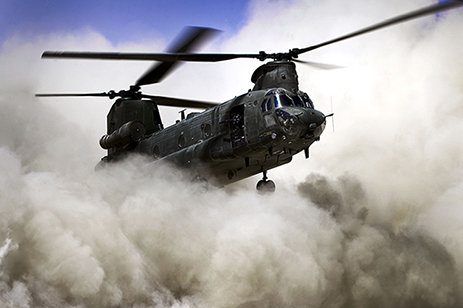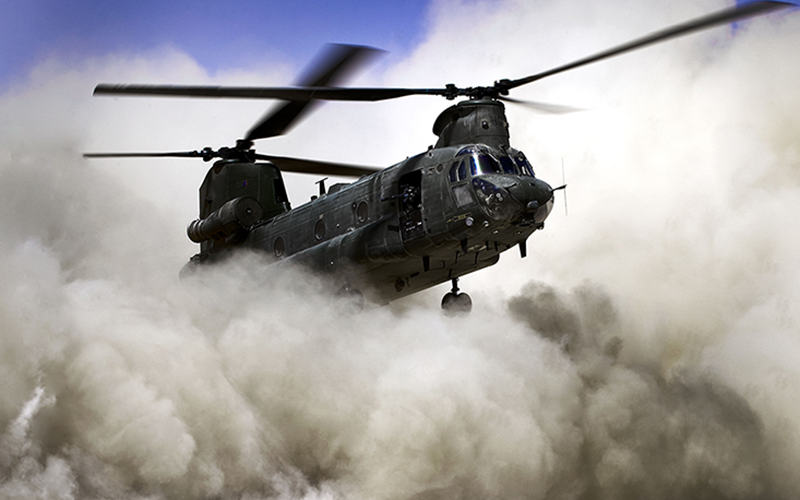
Thousands of helicopters, both in military and commercial applications, experience non-optimal weather conditions caused by snowstorms, sea spray, blowing sand, dust, fog, smoke, etc. on a daily basis. These degraded visual environments (DVE) contribute to aircraft crashes and reduced operational effectiveness. In the desert, for example, military helicopter rotor downwash can produce a brownout, reducing pilot visibility to near zero and often resulting in hard landings that cause downtime and costly repairs.

Brownouts occur during a landing approach or departure where the helicopter’s own rotor wash kicks up loose dirt and debris, so much so that it eliminates the pilot's visual cues that normally help them determine the right position, attitude, and motion of the helicopter in relation to the earth. Though brownouts are challenging, they are made worse when other non-optimal conditions such as darkness, rain, or snow compound the issue. In the worst case, this DVE can cause a crash and loss of life. More often landings in DVE are aborted or pilots come in too hard causing structural damage to the aircraft, which results in aircraft downtime and repairs. Aircraft downtime can cause the delay of critical missions and can increase the vulnerability of war-fighters awaiting those aircraft.
Though systems to combat DVE and enable pilots to safely land in these conditions have been in development for years, these systems are often custom-developed, incurring high costs and long development times. The price of these custom systems pushes project deadlines out and inflates the price of helicopter programs, lowering the overall return on investment. Platform developers are searching for solutions that will save their already constrained budget while providing them with the advanced technology needed to safely land their aircraft and keep their businesses or missions on track.
Today’s military DVE systems typically consist of a number of passive and active, high resolution and deep penetrating sensors to provide real-time multi-sensor fused imagery that provides a clear picture of the environment around the aircraft, enabling a safe, smooth descent to the landing target.
When an existing customer required graphics processing and data storage that could handle their DVE sensor system requirements, they contacted Curtiss-Wright to provide a commercial off-the-shelf (COTS) solution that could reduce their cost and time-to-market, while at the same time providing a long lifecycle.
Download the case study to learn more.